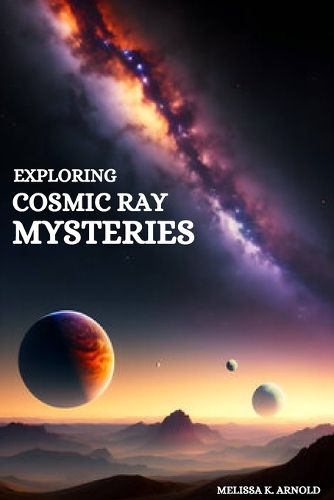Readings Newsletter
Become a Readings Member to make your shopping experience even easier.
Sign in or sign up for free!
You’re not far away from qualifying for FREE standard shipping within Australia
You’ve qualified for FREE standard shipping within Australia
The cart is loading…






This title is printed to order. This book may have been self-published. If so, we cannot guarantee the quality of the content. In the main most books will have gone through the editing process however some may not. We therefore suggest that you be aware of this before ordering this book. If in doubt check either the author or publisher’s details as we are unable to accept any returns unless they are faulty. Please contact us if you have any questions.
Like in the past cosmic rays (CR) may help us extend our knowledge of Particle Physics. Such a case is the nature of Dark Matter (DM). That question lies in the intersection of particle physics and astrophysics. It involves both questions of particle physics modeling, as well as of production and propagation of cosmic rays.Cold dark matter (CDM) has been established by many evidence as the stan-dard paradigm for the missing matter of the universe. Beginning with early obser-vations of velocity dispersions of galaxies in clusters [358], and later measurements of galactic rotation curves [296, 295], CDM has been supported by numerous ad- ditional observations. These include strong lensing of background galaxies [339],
x-ray emission from galaxy clusters [91], the combination of CMB and type Ia supernovae data [313], measurements of the distributions of galaxies [118, 334], as well as the highly remarkable recent study of the bullet cluster [117].Measurements
of the CMB, the need for early structure growth, and the success of big-bang nu-cleosynthesis rule out baryonic matter as being the dark matter, necessitating anew particle beyond the standard model.
$9.00 standard shipping within Australia
FREE standard shipping within Australia for orders over $100.00
Express & International shipping calculated at checkout
This title is printed to order. This book may have been self-published. If so, we cannot guarantee the quality of the content. In the main most books will have gone through the editing process however some may not. We therefore suggest that you be aware of this before ordering this book. If in doubt check either the author or publisher’s details as we are unable to accept any returns unless they are faulty. Please contact us if you have any questions.
Like in the past cosmic rays (CR) may help us extend our knowledge of Particle Physics. Such a case is the nature of Dark Matter (DM). That question lies in the intersection of particle physics and astrophysics. It involves both questions of particle physics modeling, as well as of production and propagation of cosmic rays.Cold dark matter (CDM) has been established by many evidence as the stan-dard paradigm for the missing matter of the universe. Beginning with early obser-vations of velocity dispersions of galaxies in clusters [358], and later measurements of galactic rotation curves [296, 295], CDM has been supported by numerous ad- ditional observations. These include strong lensing of background galaxies [339],
x-ray emission from galaxy clusters [91], the combination of CMB and type Ia supernovae data [313], measurements of the distributions of galaxies [118, 334], as well as the highly remarkable recent study of the bullet cluster [117].Measurements
of the CMB, the need for early structure growth, and the success of big-bang nu-cleosynthesis rule out baryonic matter as being the dark matter, necessitating anew particle beyond the standard model.